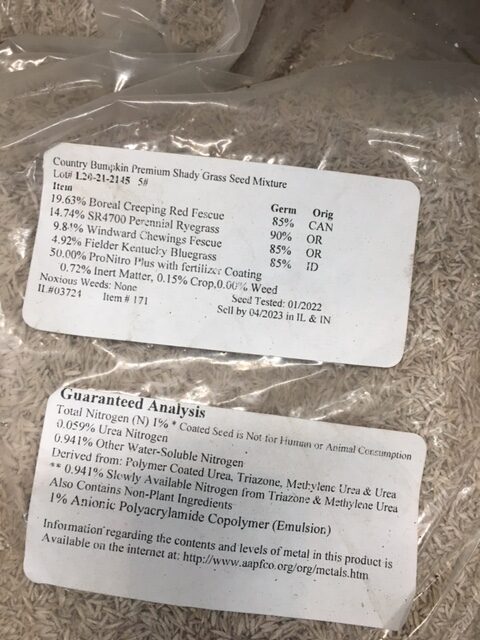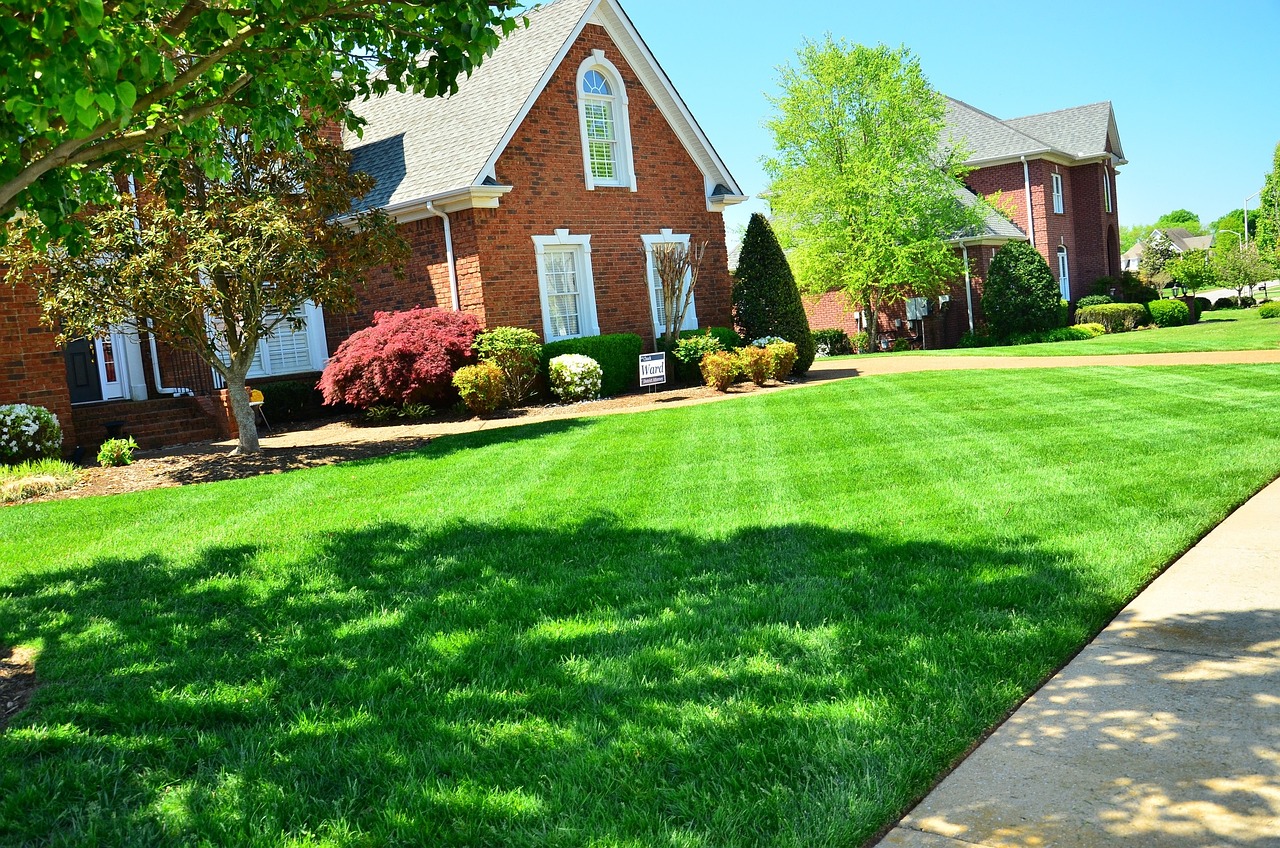lawn care for northern illinois
Choosing the right grass and lawn maintenance
Whether you are looking for sun, shade or semi shade grass, our garden experts can help you make the right choice.
Call 847-566-2176 or Contact Us.
Right image: Country Bumpkin Premium Shady Grass Mixture.
Note the label breakdown by species, germination rate and origin. There is a light concentration of nitrogen fertilizer (N) as a starting additive.
The higher percentage of fescues and ryegrass is specifically chosen for best results in shady areas. Shady means at least 2 to 4 hours of sun per day. Four hours would be best. Lawn grass will not grow in full shade.

selecting turfgrass
Species
Cool season turfgrass – The most common cool season turf grasses in Illinois are Kentucky bluegrass, perennial rye grass, tall fescue, fine fescue and creeping bentgrass.
It is important to note that cool season turf grasses in Illinois grow best when soil temperatures, measured at the four inch level, are between 50 and 65 degrees Fahrenheit and when the air temperature is between 60 and 75 degrees Fahrenheit.
Be aware that during the high summer temperatures cool season turfgrasses will probably go dormant without irrigation.
The best time to sow these grasses is late summer or early fall when the least stress is placed on newly germinated seed. If you do need to sow in spring, irrigation would be best to establish the lawn from seed.
Warm season turfgrass – Zoysia, Bermuda, and Buffalograss are not that suitable for our zone and are used more commmonly in southern Illinois.
Kentucky bluegrass – This popular and widely used species spreads by rhizomes. Most cultivars require moderate to high maintenance such as watering, fertilizing and mowing.
Rhizomes can make thatching a problem.
Best mowing height is 2 to 3 inches.
Perennial ryegrass – Has a bunching spreading habit. Maintenance requirements are moderate to high like bluegrass. Unlike bluegrass though, ryegrass has a poor recuperative ability and is best used in low maintenance type areas.
Thatching is not an issue due to the bunching habit.
Best mowing height is 2 to 3 inches.
Tall fescue – Has a bunching spreading habit also with poor recuperative ability. Use in low maintenance areas.
Thatching is not an issue due to the bunching habit.
Fescue does well in heat and dry conditions and is a good transition blend between cool and warm seasons.
Best mowing height is 2 to 3 inches.
Fine fescue – This finely textured grass has a bunching and rhizomatous growth habits (depending on variety). Wear tolerance is poor to moderate and best confined to lower maintenance areas.
Best mowing height is 2 to 3 inches.
Creeping bentgrass – Spreads by stolon and is a fine textured, high maintence grass often used on putting greens.
Most of our cool season turfgrass seed consists of mixes and blends of different species – this increases tolerance and diversity to environmental and pest issues.
Prepare the site before planting
- Eliminate all competing vegetation.
- Rough grade the area with a well draining medium. Remove roots, large stones etc.
- Add a good quality top soil – at least 2 inches deep to promote a healthy root system.
- Apply a 2 to 4 inch layer of compost if possible.
- Work the soil to a depth of 6 to 8 inches. Using a rototiller will make this task easier.
Remember – good soil will make great lawns.
After planting care
- Do not fertilize until seedlings have reached a height of at least 2 inches.
- Apply a balanced fertilzer like 10-10-10 per spreader instructions (5 pounds per 1,000 square feet).
- Water thouroughly.
- Only mow when the grass reaches 3 to 4.5 inches (never remove more than 1/3 grass when cutting). Cutting the lawn too low can kill it – also will result in thinner, less extensive root growth.
- Try and avoid traffic over the area for as long as possible.
- It’s best to try and avoid applying herbicides until the lawn has established.
Notes on fertilizer and soil PH
- Turfgrass does best in a slightly acidic soil with a PH level between 6 to 7. These levels will provide best availability of nutrient uptake.
- Nitrogen (N) content is the most important for turf – provides for chlorophyll production. An adequate nitrogen level will result in good lawn color and density.
- Phosphorus (P) is especially useful at seedling stage as it promotes energy. It is less useful on established lawns.
- Potassium (K) is important for all lawns. It aids root growth and overall development. It helps strengthen the plant to withstand stresses such as drought, heat, cold and disease.

